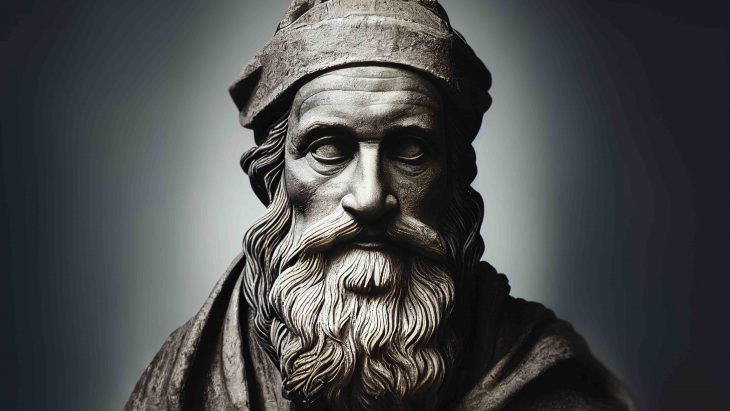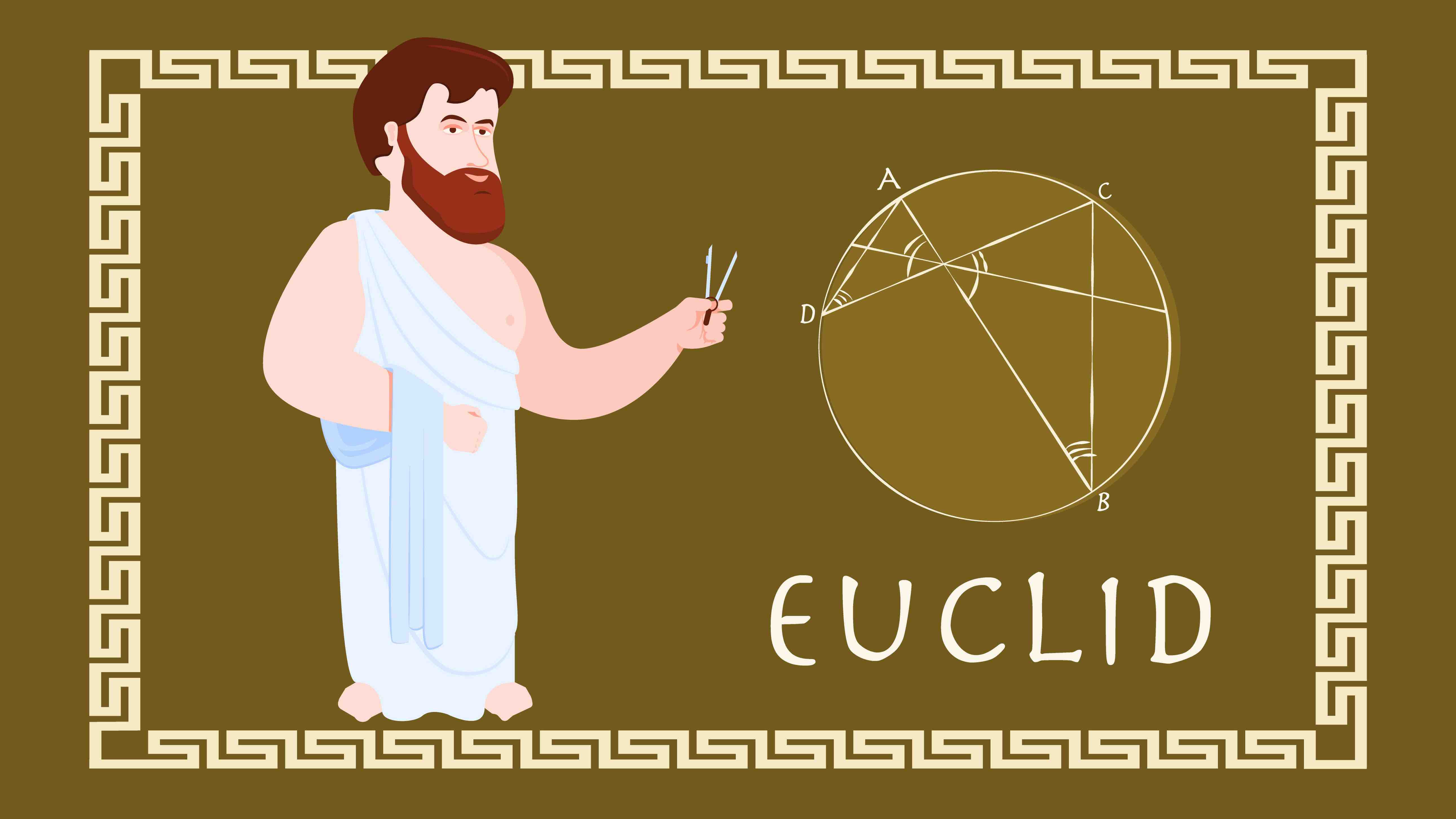
Euclid, often referred to as the “Father of Geometry,” made significant contributions to the field of mathematics that continue to shape our understanding of shapes, lines, and space. His seminal work, “Elements,” laid the foundation for Euclidean geometry and remains a pivotal text in mathematical education. In this article, we unravel 11 fascinating facts about Euclid, shedding light on his life, contributions, and the enduring legacy of his work.
Euclid’s Birthplace
Euclid lived during the Hellenistic period in ancient Greece, around 300 BCE. This was a time of great intellectual flourishing, with mathematics and philosophy playing a central role in Greek society.
“Elements”
Euclid’s most famous work is “Elements,” a comprehensive treatise on mathematics, particularly geometry. This monumental work consists of 13 books, covering a wide range of topics, including plane geometry, solid geometry, number theory, and more.
A Teaching Institution
Euclid is believed to have taught and conducted his mathematical investigations at the renowned Library of Alexandria in Egypt. This library was a center of knowledge and learning during the Hellenistic period, attracting scholars from various disciplines.
Logical Deduction
Euclid’s approach to geometry in “Elements” is based on logical deduction. He starts with a set of fundamental definitions, postulates, and common notions and proceeds to prove theorems by building upon previously established propositions.
Euclidean Geometry

Euclidean geometry, named after Euclid, focuses on the properties of flat surfaces, such as lines, angles, triangles, and circles. It provides a foundation for understanding spatial relationships and has practical applications in fields like architecture, engineering, and art.
Prime Number Theorem
Euclid made significant contributions to number theory in his work “Elements.” Notably, he formulated and proved the infinitude of prime numbers, demonstrating that there is no largest prime number and that prime numbers continue infinitely.
Euclidean Algorithm
The Euclidean algorithm, attributed to Euclid, is an efficient method for finding the greatest common divisor (GCD) of two numbers. This algorithm has widespread applications in computer science, cryptography, and other fields.
Euclid’s Parallel Postulate
Euclid’s fifth postulate, also known as the Parallel Postulate, states that if a line intersects two other lines and forms interior angles on the same side that sum to less than 180 degrees, the lines will eventually intersect. This postulate served as a basis for Euclidean geometry for centuries until non-Euclidean geometries emerged.
Influence and Preservation
Euclid’s work had a profound influence on the development of mathematics and education. Elements” became a standard textbook for teaching geometry for over two millennia, and his logical deductive approach set a precedent for mathematical reasoning.
Surviving Fragments
Unfortunately, much of Euclid’s original writings are lost to history. Only a few surviving fragments and later commentaries allow us to piece together his contributions and understand the extent of his mathematical achievements.
Euclid’s Lasting Impact
Euclid’s lasting impact on mathematics cannot be overstated. His work laid the foundation for future mathematical developments and inspired countless mathematicians and scientists to explore the depths of geometry and its applications in various disciplines.
Conclusion
In conclusion, Euclid’s contributions to mathematics, particularly in the field of geometry, have left an indelible mark on the intellectual landscape. His work continues to be studied and appreciated, showcasing the power of logical deduction and the beauty of geometric reasoning. Through “Elements,” Euclid’s legacy endures, inspiring generations of mathematicians and scientists to explore the wonders of mathematics.
Frequently Asked Questions (FAQs)
What is Euclid’s full name?
Euclid is often referred to simply as Euclid of Alexandria. The name “Euclid” is derived from the Greek “Eukleides.”
Was Euclid the only mathematician of his time?
Euclid was one of the notable mathematicians of ancient Greece, but he was not the only mathematician during his era. Many other mathematicians made important contributions to the field during the Hellenistic period.
Is Euclidean geometry still relevant today?
Euclidean geometry remains relevant today, particularly in fields that deal with flat surfaces and spatial relationships, such as architecture, engineering, and computer graphics. It serves as a fundamental framework for understanding space and shapes.
What are non-Euclidean geometries?
Non-Euclidean geometries are alternative geometrical systems that do not adhere to Euclid’s Parallel Postulate. These geometries explore different possibilities for the behavior of lines and angles and have implications in fields like physics and general relativity.
Are there other works attributed to Euclid besides “Elements”?
While “Elements” is Euclid’s most famous work, there are references to other works attributed to him, such as “Data,” “Optics,” and “Phaenomena.” However, these works have not survived, and their content is known only through later references and commentaries.
Was this page helpful?
Our commitment to delivering trustworthy and engaging content is at the heart of what we do. Each fact on our site is contributed by real users like you, bringing a wealth of diverse insights and information. To ensure the highest standards of accuracy and reliability, our dedicated editors meticulously review each submission. This process guarantees that the facts we share are not only fascinating but also credible. Trust in our commitment to quality and authenticity as you explore and learn with us.
